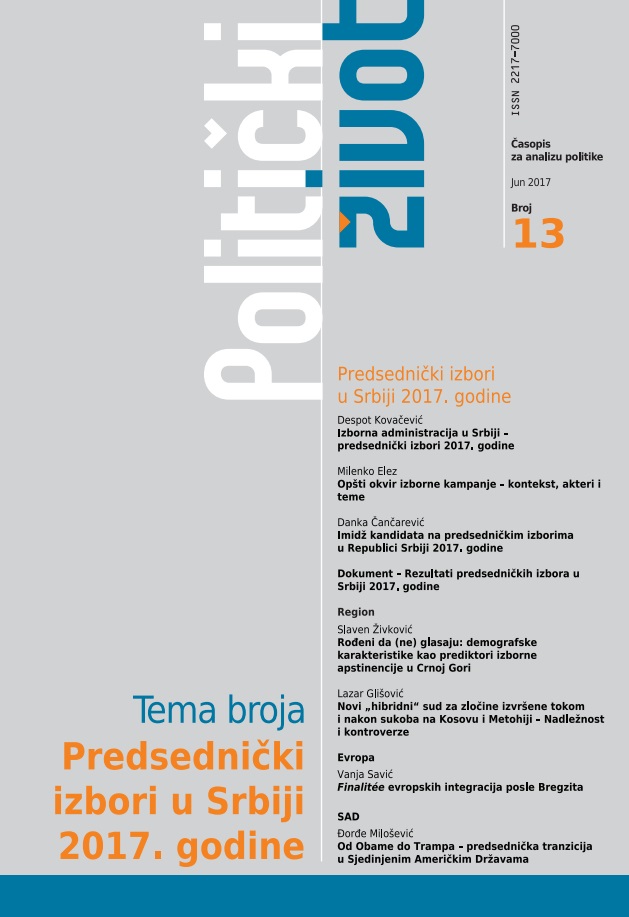Finalitée evropskih integracija posle bregzita
Finalitée of European Integration after Brexit
Author(s): Vanja SavićSubject(s): Political behavior, EU-Approach / EU-Accession / EU-Development
Published by: Fakultet političkih nauka Univerziteta u Beogradu
Keywords: European integration theory; Brexit; Multi-speed Europe; neofunctionalism; liberal intergovernmentalism
Summary/Abstract: Theories of Europen integration provide a guidance in thinking about the direction in which the EU will develop after Brexit. In the dynamics of European integration between further “widening” vs “deepening,” Britain has always been viewed as a proponent of further widening of the common market, while the countries of the so-called “European core” have been viewed as proponents of further deepening of integration among existing member states. Paradoxically, Britain’s exit from the EU thus removes the obstacles for further (including political) integration and leads to semi-official acceptance of previously controversial idea about “the multi-speed Europe”. Such outcome of the dynamics of European integration between widening and deepening suggests some conclusions for another debate, the one between neofunctionalist and intergovernmentalist theories of European integration. Functional spillover theory insists that integration goes deeper than governments intend, while intergovernmentalism insists that national governments are ultimately in charge of the process, tailoring it to their needs. If Europe goes towards deeper integration among countries that share the same fundamental vaues, it bolsters the neofunctionalist argument. It is at the same time the most desirable political destiny for the united continent and the only one that can inspire true changes in aspiring candidate countries.
Journal: Politički život
- Issue Year: 2017
- Issue No: 13
- Page Range: 79-87
- Page Count: 9
- Language: Serbian

